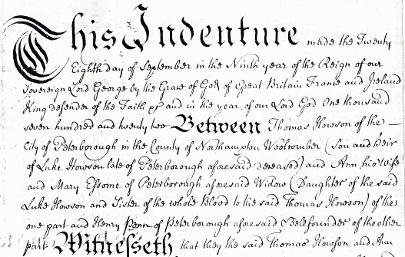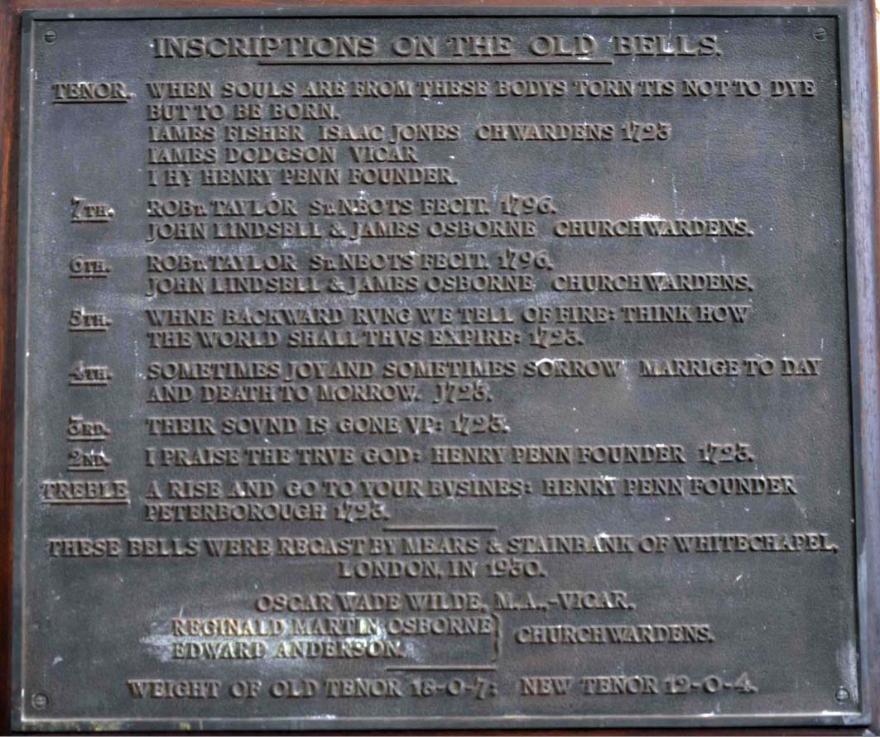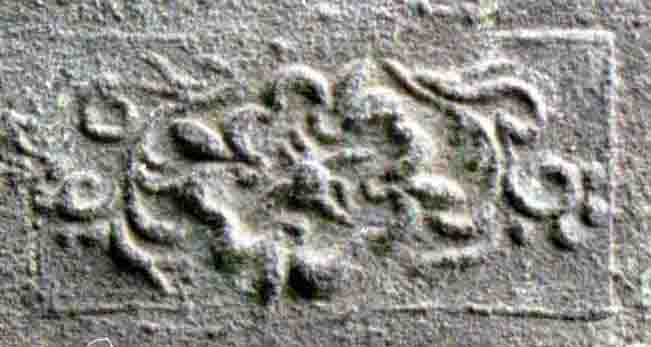
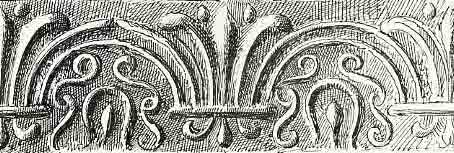


Get a free Badge!
Get a free Badge!
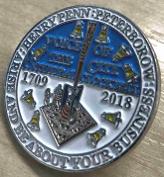
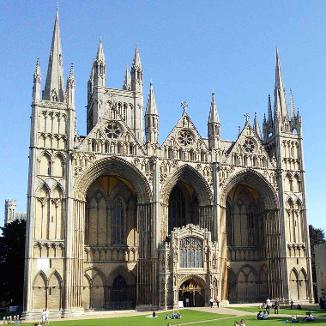
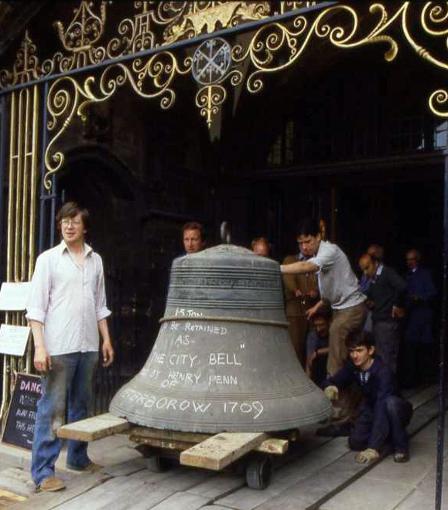
Voice of the city .mp3
Listen to this early recording of the five largest bells that Henry Penn cast.
Peterborough Cathedral five old bells .mp3
Thomas Eyre's map of 1723 showing the City. The Cathedral can be seen upper right. The site of Henry Penn's foundry is marked with a red dot, near to Bell Dyke.
It was on this dyke he floated his bells onto the river by barge and on to their destinations.
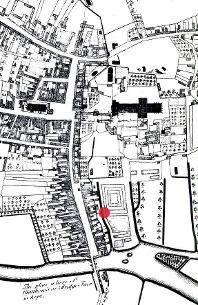
This is the same bell as it was hung in the cathedral. Sadly its canons were removed in 1898 and the bell was mounted directly onto the wooden headstock. The wooden stay projecting upwards allows the bell to be set in the upside-down position against the slider for use in change ringing.
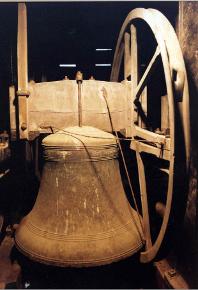
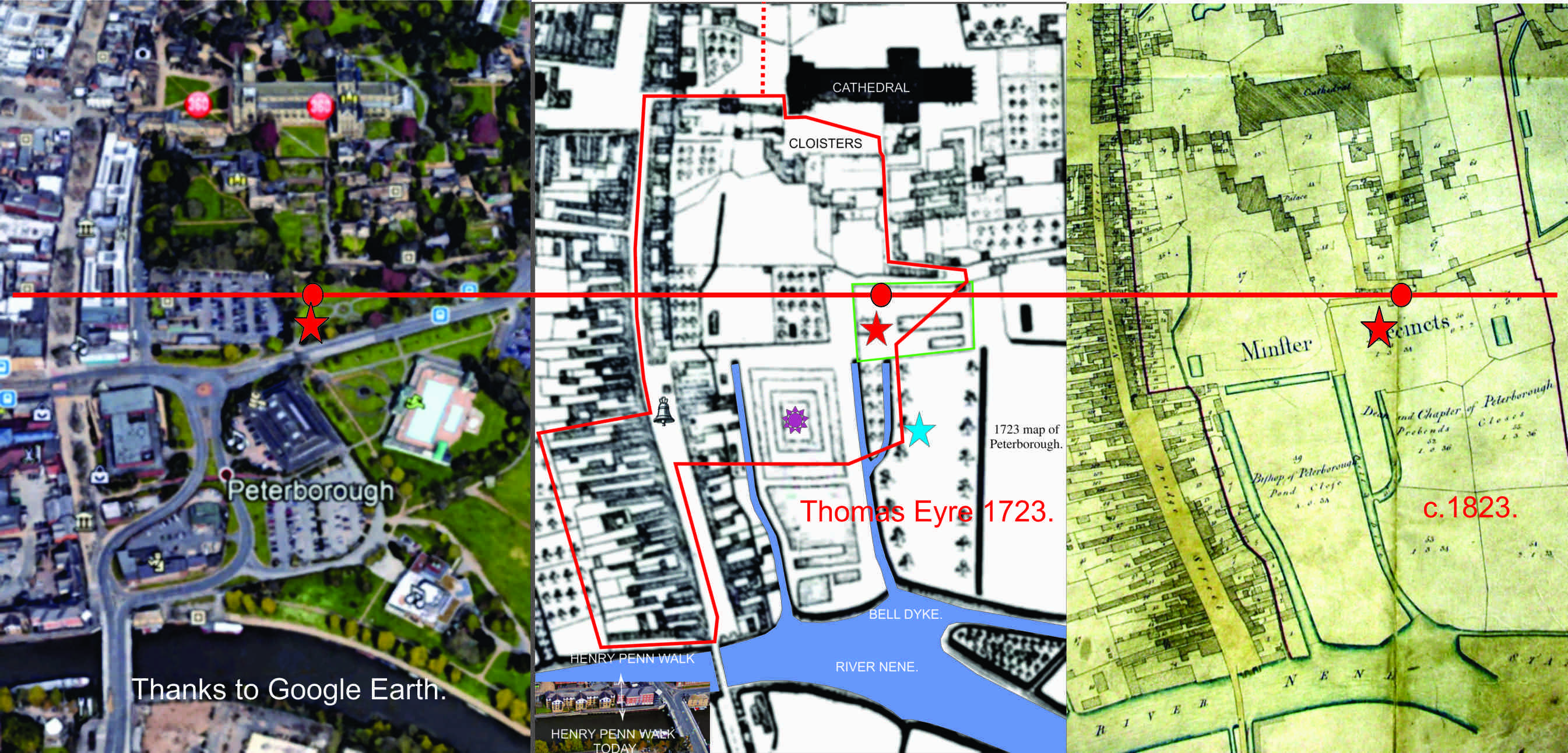
Before we go look at any other part of this page lets look into how accurate cartographers were at the time of Penn. Left Google Earth. The round red dot indicates Bishops Gardens in the city. Center Thomas Eyre map of 1723 shows an accurate placing of the same area and again c1823 the map of the Minster Precincts where all the land is shown to be in the hands of the Cathedral authorities.
Like many Henry Penn (1685-1729) came to Peterborough for work.
He was a skilled bellfounder with a prize in mind. The prize was the formidable task of casting a set of ten bells for the Cathedral. Penn was just one of a number of bellfounders in the area. Today there are just two in the whole of the British Isles. This twenty four year old was very sure of himself and if he could scoop this contract his future as a top ranking tradesman would be assured. He had served his apprenticeship under his uncle Henry Bagley at a Bell Foundry at Ecton in Northamptonshire. It was in this foundry, back in 1687, the first ring of ten bells ever to be rung in peal (an octave plus two notes) was new cast for Lichfield Cathedral. Penn was only two years old at this time but it was with this fact and with his masters tools he was able to secure and undertake the task of the first ring of ten bells in Northamptonshire nearly 300 years ago. Both these peals of 10 bells were tuned to the key of D major.
He may have be the first heavy engineer of Eastern Industry Peterborough.
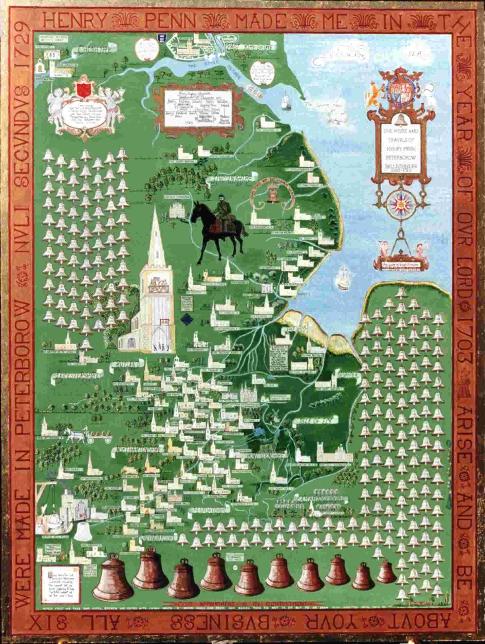
Left the Penn Map shows the 100 known places in thirteen counties for which Penn cast bells. He was the most prolific bellfounder of his time considering he was only 44 when he died.
An American Connections. Benjamin Franklin (born 1706) had family connections in the village of Ecton Northamptonshire. His Grandfather Thomas was the Blacksmith. After his death his son Thomas continued working as a blacksmith. Henry Bagley bellfounder, Henry Penn’s uncle, joined him in the village in 1687 to help with the bells for Lichfield.
A sad thing happened in 1984 when a ring of new bells was proposed for Peterborough Cathedral. Three of the existing Penn's bells were not to be included. A group of Americans were in the city at the time and to cut the story short purchased all three. One weighing a ton was to be used as the-
Pittsburgh City Bell. Henry Penn was thought to be related to the Penn founders. This was found not to be the case. The scheme was never honoured and the 1709 bell has languished in a Pittsburgh store. This is rather shortsighted as many other Penns and their families from this country helped to build America, the place it is today.
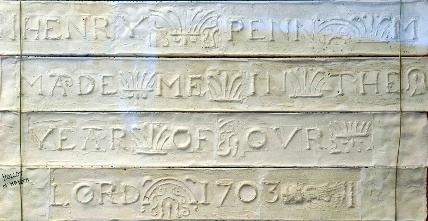
HENRY PENN MADE ME IN THE YEAR OF OUR LORD 1703
Plaster cast of the treble bell made at Holcot All Saints in Northamptonshire.
This was the first and last time he used it.
Horizontally behind 1703 is what looks like an Angel.
This man needed an Angel as he had to cross many difficult pathways in his lifetime.
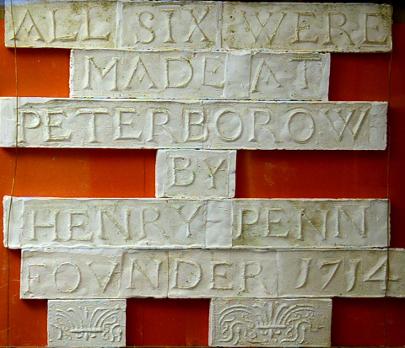
ALL SIX WERE MADE AT PETERBOROW BY HENRY PENN FOUNDER 1714.
Plaster casts made at St. Peter & Paul at Wrangle in Lincolnshire.
Peterborow is the old spelling for the city.
One can see decorative work between the lettering at both Holcot & Wrangle. This is exactly the same as his master Henry Bagley when he cast six bells for Castor Northanptonshire in 1700.
Bagley died in 1703.
What kinds of signals did bells ring out-

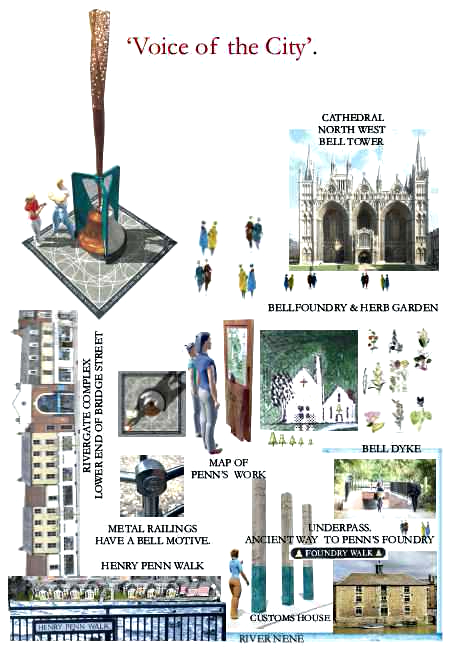
‘The Voice of the City’ is a depiction of a bell in the stages of being cast. It is a monument and tribute to Henry Penn (1685-1729). We could call him the first heavy engineer of Eastern Industry where today there are many more hardworking men and women.
Penn’s life was relatively short, just 44 years, but during this period he worked and cast bells for as many as 100 churches and houses. Most of these places are shown on the map in the bronze upright case. The painting took the writer some years to complete. The writer has been helping Stephen Broadbent who designed and erected the ‘Voice of the City’ and acted as his historical adviser.
On December sixth late afternoon and about to go home Stephen was still working. I said ‘thank you Stephen it has been a pleasure and honour working with you’. He replied ‘Thank you! If I had not seen your plaque on Henry Penn Walk and found this interesting man
there would be no ‘Voice of the City’.
Today we have all kinds of electronic media but in yesteryear messages were sent out mainly by the differing sounds of bells. Three totem poles have been erected near to the underpass now named ‘Foundry Walk’. The nameplates include two golden bells. It leads to the site of Penn’s bellfoundry and the cathedral herb gardens. Penn and I, his biographer, have in a way been honoured which makes me feel very proud. Eight of the children of Dinah and Henry were christened at St. John’s Church near to the Market Square that must make them Peterborians like this old boy who came to the city in the 1930s.
The Voice of the City depicts Peterborough Cathedral clock bell, which has kept time in order for thousands of people over 300 years, one third of the life of the existing building. A cut out section reveals the bell with an inscription by Penn. ‘Arise and be about your Business.’
He did just that!
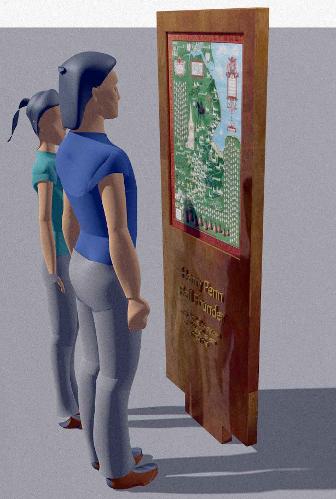
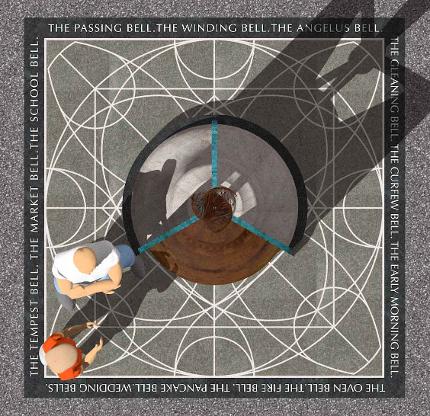
On the base of the map .
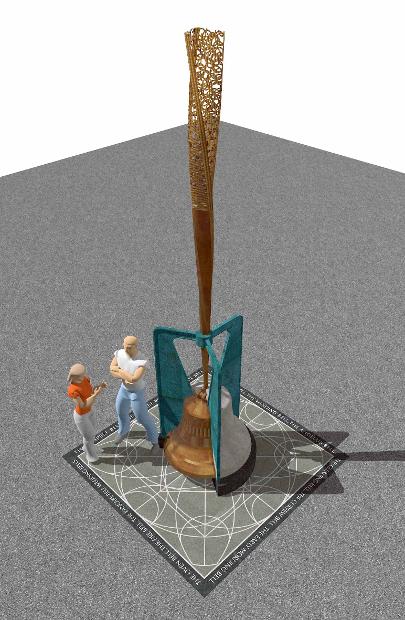
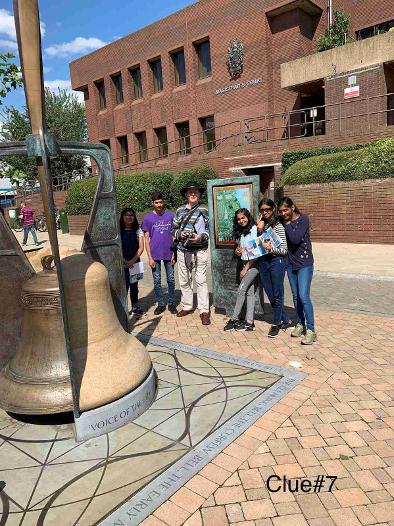
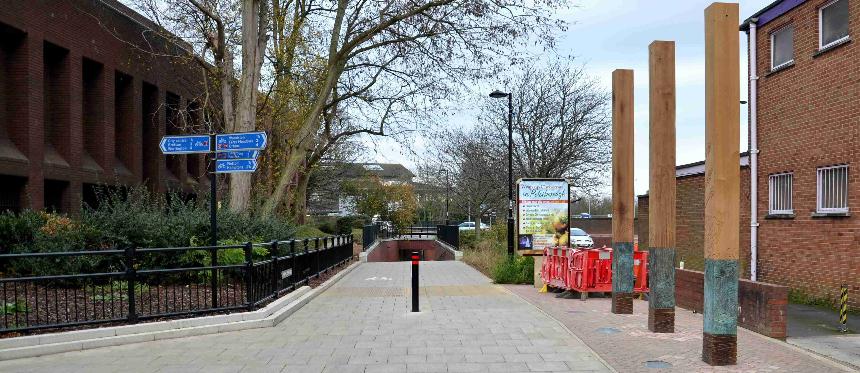

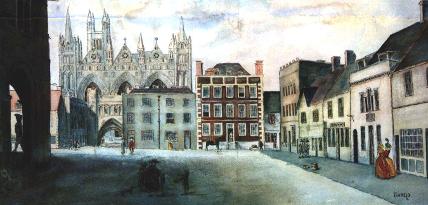
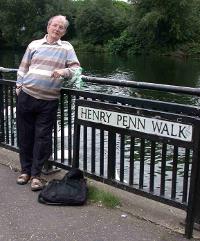

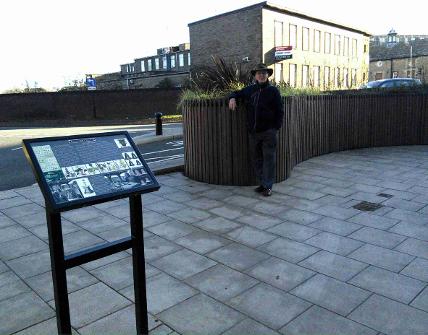
The Planter. Representing the Quay from which Penn floated his bells. To view 'Voice of the City' film, copy and paste into YouTube....
https://youtu.be/Ea57yXpO7Zk.
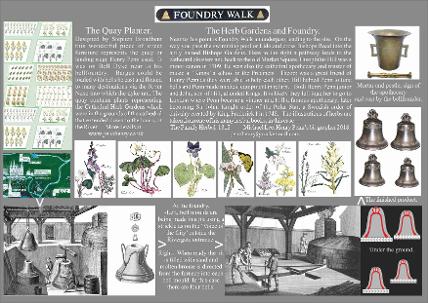
The display shows details of the herb gardens and foundry and also how a bell would have been cast.
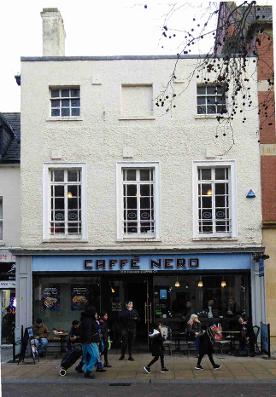
THE WHITE HART
A 'GHOST' AT THE WHITE HART PETERBOROUGH.
The White Hart, once a Public House in Long Causeway Peterborough, (left) stands very near to the Cathedral. Its facade, at the base like many other buildings, has been lost and is now a cafe. It is likely the rear entrance was in the cathedral precincts, in close proximity to both Theop Hill and Henry Penn's place of work. Little is known about Penn's other medical team, Sam Pendelton (Physician) and Alex Stuart (Surgeon). Theop Hill MB Apothecary was a busy man and apart from his medical activities, was a Minor Canon at Peterborough Cathedral. He was asked to undertake many unusual tasks such as, in this case, the laying of a ghost. The following is a letter published in the Northampton Mercury April 30, 1722. It has some connection with electioneering at Peterborough. In the same year it seems that Mr. Stroud, the landlord, had invented a ghost (possibly to increase his trade) and in some way also involved himself in slander. Theop Hill may have been asked to lay this so-called ghost.
These details were given to the writer by Richard Hillier, at one time an archivist at Peterborough Reference library, now retired. He is now a member of Peterborough Civic Society. The letter below was also framed and hung at the White Hart.
Mr. Stroud, With more Labour than the Thing deserved, I have found your Ghost to be a Sham, and it would be no more than a Piece of Justice to the World, to declare the Truth within an Hour to Mr. Cooke, and soon after to all the Town; by this you will be prosecuted for Slander, and may be, for what I know, disgrac'd and undone. But now, by one good Action, you have the Offer from me, to make Amends for an ill one: If you will send me Word under your Hand, that you will give one Vote for Mr. Wortley, and the other (as you have promised) to Mr. Parker, I will keep your Council, and save you from all the Evil that might come upon you. And moreover, your Son shall have a King's Scholar's Place. Send me Word in three Lines you will vote for Mr. Wortley, and all is, and shall be for ever safe; and you will particularly oblige one, who is more able to serve you, than you at present suppose.
Yours as you use me, Theo. Hill. Send me an Answer in half an Hour, or you are undone..
See also Sir John Hill on this site-

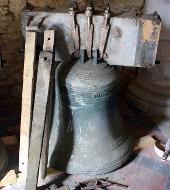
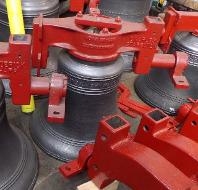
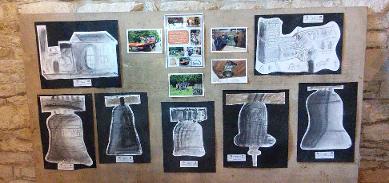
Cotterstock 4 bells August 2017.mp3
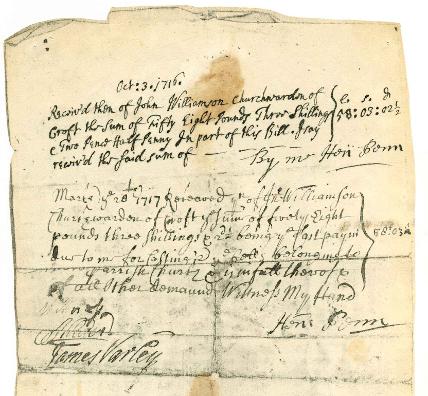
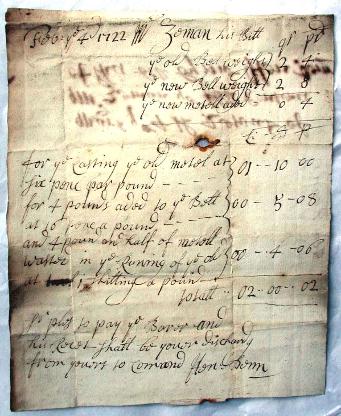
found with other Croft documents in Lincolnshire Archives. found at the hospital with 500 other bills.
